Introduction
The CrazyCap 2 ($59, 1.9 oz/56 g) is an ultraviolet water treatment device that takes the form of a bottle cap. At first glance, this little multi-use item seems like the perfect invention for ultralight backpackers on the go. But how does it perform in the field with its bottle compatibility issues?
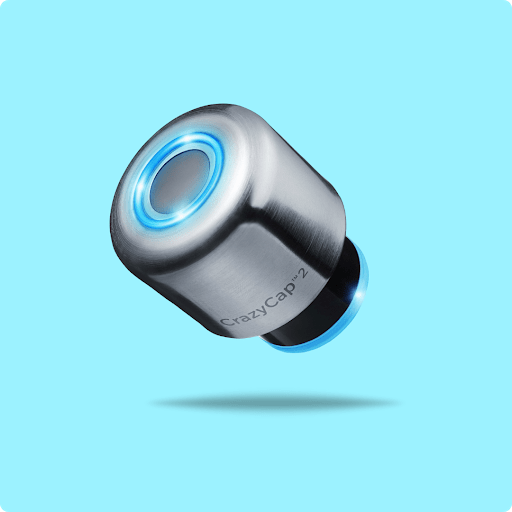
The Test
Inside the box, I found directions, a warning about not looking directly into the UV light, an alcohol swab, a USB charger, and The CrazyCap 2. Aside from being double the weight (0.85 oz/24 g vs 2 oz/56 g) than a standard S’well water bottle, the cap is pretty similar to a standard S’well lid.
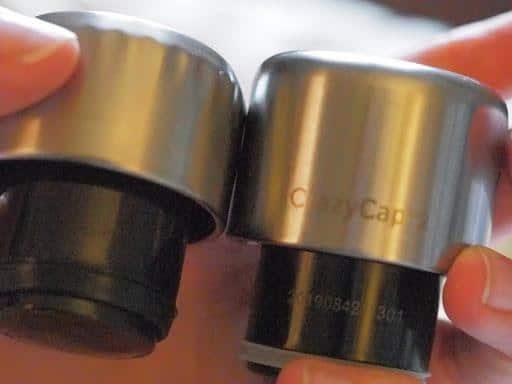
The CrazyCap 2 lid requires a specific bottle format and you will require either a CrazyCap bottle, S’well bottle, or another similarly configured bottle. I used a Manna water bottle. I did find a cola style water bottle in plastic (2.8 oz/80 g) (also made by Manna), but because plastic has a different screw style than the stainless steel bottles, the CrazyCap 2 didn’t fit.
Touch once and the CrazyCap 2 lights up and give the battery status, touch twice and it does a normal sterilization mode (one minute), touch five times and it gives the crazy sterilization mode (2.5 minutes). Indicator colors red for less than 25% battery, orange for 25-50% battery, green for a full charge, and blue for sterilizing in progress.
The charge mounts overtop the cap and plugs into any USB port, including one on a laptop or battery pack.
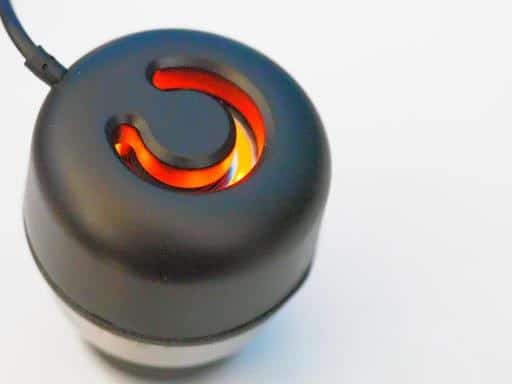
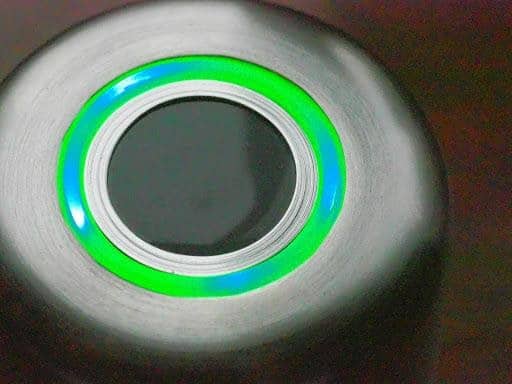
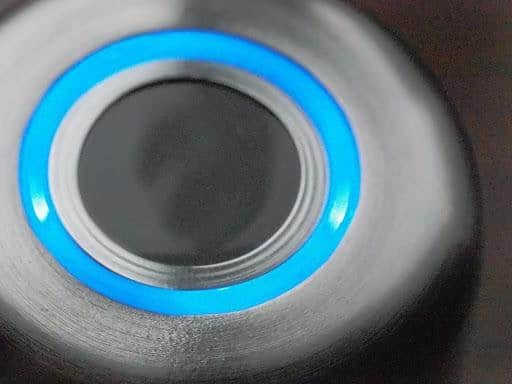
The Limitations
The Crazy Cap 2 is a neat product but is a limited use item for most ultralight or lightweight backpackers. The first obvious issue is that The CrazyCap 2 uses a stainless steel bottle which is heavier than most of us would be comfortable packing around if only to protect our “ultralight cred.” I’m all for finding little luxuries on the trail and if a stainless water bottle is yours, this is a fantastic product. For me, a fancy water bottle is definitely not one of my luxuries.
Second, the battery life on The CrazyCap 2 lasts about a week doing 5 batches of 17 ounces (0.5 L) or 85 oz (2.5 L) of water per day or 595 ounces (17.6 L) per week. This is great on a short trip with low hydration needs. However, on a longer trip, charging may be required, which therefore requires the addition of a charging pack (or two.) Obviously this is a limitation but not a real strike against The CrazyCap 2. If you are bound to using UV technology, battery life will be a constant factor. A Steripen Ultra has about 1,700 ounces (50 L) of water per charge or 170 ounces (5 L) per day for 10 days. The Steripen Ultra weighs about 4.9 ounces (138 g) vs CrazyCap 2’s 1.9 oz (56 g), but the Steripen Ultra also processes twice as much water per week and lasts an additional three days.
This brings me to my third point. After I started using hydration packs because I like them more than bottles, I didn’t use my Steripen Ultra very often. When I finally dug it out to sell it about 5 years after it had last been charged and put away, the battery was still at ¾ charge. The LCD screen still had its idiot-proof interface. I could use the Steripen Ultra instantly and explain how it works to the guy who bought it. The CrazyCap 2 was less intuitive, in that the button is glitchy with a 3-second delay between touching the button and it responding. The delay makes you second guess if you are using the CrazyCap 2 correctly. I found myself asking, “Is this thing even on? Or does it need to be charged again?” The CrazyCap 2 indicator colors (red, orange, green, and blue) all make sense, however, what it does not do (unlike the Steripen Ultra) is give a reading if the water is too contaminated or if the sterilization failed. The Steripen Ultra has a happy face, a sad face, an error, and a battery life indicator on its LCD screen, and its neoprene carry case has a definition for each icon.) A sterilization failure indicator seems crucial for any device you plan on using to keep you safe from giardia.
The CrazyCap 2 can be used multi-functionally for sterilizing other items, and this is good in theory. It’s true, a UV light can be used for sterilization, however, it is important to note that UV Sterilization only works if the light is not impeded. By not impeded I mean the surface has to be clean, with no particulates covering the surface. The requirement of surfaces to be clean is why hospitals don’t extensively use UV sterilization technology. This is also why cloudy water doesn’t work with a UV light, as the particulates block the light and the sterilization fails. In short, this is a great device if you know you have crystal clear water. UV sterilization is a recipe for disaster with cloudy water. With the CrazyCap 2 providing no notification it failed sterilization in cloudy water, it makes me wary of using it on long trips where I have questionable water sources.
Another potential issue is that CrazyCap 2 is relatively expensive. The cap itself is $59.00 plus a compatible bottle at $25.00 – $45.00. A Steripen Ultra is $110.00 and a Steripen Ultralight is $90.00. Having used both types of products, I would pick the Steripen Ultra. The Steripen Ultra can pretty much be used in any water bottle, and overall I found it more reliable than the CrazyCap 2.
My final issue with the CrazyCap 2 is this – every time you fill the bottle in a water source, you have to sterilize the mouth of the bottle. The mouth of the bottle must either be sterilized before you screw the cap on so you don’t cross-contaminate the cap’s threads, or you must sterilize the mouth of the bottle every time you take a sip. CrazyCap provides one alcohol swab for this purpose. On a long backpacking trip, a single alcohol swab would be insufficient. Carrying one alcohol swab for every water bottle refill or every sip is impractical, to say the least. Therefore, you could use the CrazyCap’s UV rays to sterilize the mouth of the bottle but at a battery cost of 1 use per every 17 oz (0.5 L) of water sterilized, which cuts the battery life down to 3.5 days. The other possibility, of course, is to take a weight penalty and carry a small bottle of alcohol or bleach with a small cloth to wipe down the mouth of the bottle. Obviously, this is an issue with other UV systems as well, but the Steripen markets a bottle mouth cover for filling the bottle. This could be a solution for the CrazyCap as well but to my knowledge, no one is making a bottle mouth cover for cola style bottles.
Conclusion
I love the idea of the Crazy Cap 2, but its limitations concerning the bottle size and type mean that its functional use in my pack is limited. From an ultralight perspective, the best use of CrazyCap 2 is for a short duration trip with excellent water sources. I would gladly use the product for a mountain marathon where water sources are frequent and clean, gear is minimal, and the duration is short. At this time, however, the use of the CrazyCap 2 is primarily for people who have a sentimental attachment to a specific S’well style bottle regardless of its weight. If CrazyCap produces an ultralight bottle, or comes up with more universal designs, and addresses the mouth sterilization issues, then I can see greater use for this product in the future.
DISCLOSURE (Updated April 9, 2024)
- Product mentions in this article are made by the author with no compensation in return. In addition, Backpacking Light does not accept compensation or donated/discounted products in exchange for product mentions or placements in editorial coverage.
- Some (but not all) of the links in this review may be affiliate links. If you click on one of these links and visit one of our affiliate partners (usually a retailer site), and subsequently place an order with that retailer, we receive a commission on your entire order, which varies between 3% and 15% of the purchase price. Affiliate commissions represent less than 15% of Backpacking Light's gross revenue. More than 70% of our revenue comes from Membership Fees. So if you'd really like to support our work, don't buy gear you don't need - support our consumer advocacy work and become a Member instead.
- Learn more about affiliate commissions, influencer marketing, and our consumer advocacy work by reading our article Stop wasting money on gear.



Home › Forums › CrazyCap LED Water Purifier Review